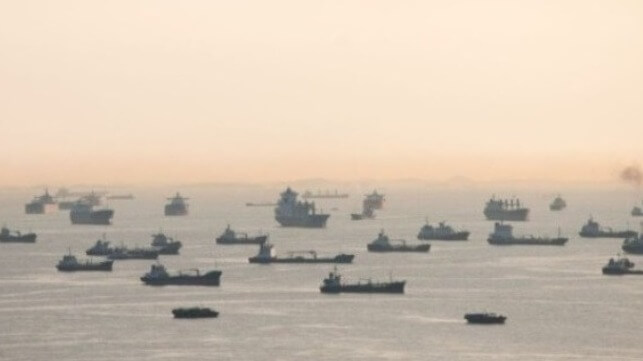World’s Longest Green Corridor Planned Between Singapore and Rotterdam

Efforts are underway to form the world’s longest green corridor to enable low and zero carbon shipping between the hubs of Singapore in the Far East and Rotterdam in Europe. The port authorities for each port are joining with others in the industry hoping to inspire others to follow their lead while they also seek to expand on the concept of green shipping corridors first launched at the COP26 conference last fall in Glasgow. Beyond supporting the adoption of alternative fuels, a new agreement between the Maritime and Port Authority of Singapore and the Port of Rotterdam Authority also aims to optimize maritime efficiency, safety, and the transparent flow of goods by supporting the use of digitalization.
The new agreement forms a coalition that will bring together stakeholders from across the supply chain to realize what they are calling the first Green and Digital Shipping Corridor. According to the partners, involving leaders from across the industry will enable the Green and Digital Corridor project to raise investment confidence, attract green financing, and kickstart joint bunkering pilots and trials for digitalization. The goal is to have the first sustainable vessels sailing on the route by 2027.
Singapore and Rotterdam are among the largest bunkering ports in the world, making them vital links on the Asian-European shipping lanes. Each port currently has a large trade in traditional maritime fuels, including HSFO, MGO, and low sulfur fuels, while also focusing on future alternatives. They have been supporting the increasing use of sustainable alternatives such as biofuels and the development of the infrastructure that will be required for future alternative fuels such as synthetic methane, hydrogen, and hydrogen-based fuels including ammonia and methanol.
The terms of the new agreement call for the two port authorities to bring together a broad coalition of shippers, fuel suppliers, and other companies to collectively work on potential solutions to the challenges of introducing alternative fuels and supporting the digitalization of the shipping industry. They point out that each alternative fuel has its challenges relating to costs, availability, safety, and restrictions in range due to lower energy density compared to fossil fuels. Through the formation of this collation, they look to address the challenges and support the industry’s transition.
“The Singapore-Rotterdam Green Corridor is fully in line with our strategy to accelerate the decarbonization of the maritime industry by supporting first movers,” said Bo Cerup-Simonsen, CEO of the Mærsk Mc-Kinney Møller Center for Zero-Carbon Shipping. “We need bold projects like this to leverage the learnings and further develop green partnerships across the value chain. Connecting globally leading partners around one of the major trade lanes will allow us to demonstrate concrete, scalable decarbonization solutions.”
Beyond alternative fuels, the partnership also aims to optimize maritime efficiency, safety, and the transparent flow of goods by creating a digital trade lane where relevant data, electronic documentation, and standards are shared. They believe that this will facilitate the seamless movement of vessels and cargo, and optimize the just-in-time arrival of vessels from port to port.
The port authorities will work with the Global Centre for Maritime Decarbonisation and the Mærsk Mc-Kinney Møller Center for Zero-Carbon Shipping. Other industry partners from across the supply chain are also committed to joining the effort, including bp, CMA CGM, Digital Container Shipping Association, Maersk, MSC, Ocean Network Express, PSA International, and Shell. They expect to attract more participants as the project proceeds.
